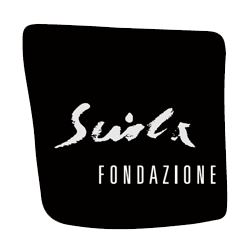Pinuccio Sciola Era una foresta – It was a forest
A scream, a strong denunciation a witness of the degradation that the earth in facing with
the indiscriminate deforestation and the massive use of natural resources.
With these words Pinuccio Sciola imagined “Era una Foresta” (literally It was a forest), like a big open-air museum, place of reflection and meditation on nature, of commitment and action for its protection. The project was conceived at the end of the last millennium – when deforestation and fires in the Amazon Forest made the wounds inflicted on our planet even more evident and dramatic.Becoming an expression and synthesis of profound environmental and environmentalist sensibility who has always been a fundamental prerequisite for the artist’s research. At least starting from when, in 1976, during the Venice Biennale, Sciola decided to fill Piazza San Marco with burnt wooden trunks that represented human bodies.Elaborated and revisited over several years – initially referred to as “Il fuoco e la foresta (“The fire and the forest”) – the study of the open-air-museum involved the installation of hundreds of sculptures, symbolizing trunks of cut burned and petrified tires, in a large and arid open space in Sardinia, mother land which was also continually violated and tortured by fire. A warning, a painful exhortation to stop the massacre before the “point of no return” – Before the Flood, just like in the 2016 Leonardo di Caprio’s National Geographic documentary’s title – and at the same time a cry of hope and a chance of rebirth.Unfortunately, the project was never brought to realization but there are still many drawings, photographs, photomontages and notes that are now on display for the first time in this exhibition that stems from the collaboration between the MUACC University Museum of Contemporary Arts and Cultures and the Sciola Foundation.Introduced by the immersive and almost surreal evocation of the petrified forest, the exhibition proposes an arrangement of design materials specifically designed to underline the working method of the artist, based on the continuous, sometimes almost obsessive reworking of ideasand pictures. Each drawing is unique and brings a sign, an intervention that differentiates it fromall the others: infinite variations on the leitmotif, which testify a tireless creative vein, thedevelopment of a research conducted with rare coherence in the horizon of a symbiotic and inseparable relationship between art and nature. Numerous, different compositional and chromatic declinations, with greens giving way to yellows, browns and blacks, the lyrical and tragic lighting set of burned skies. And the quotation from Masaccio’s Expulsion from Paradise on Earth, emblem of a humanity condemned by its own irresponsible and unfortunate choices.

